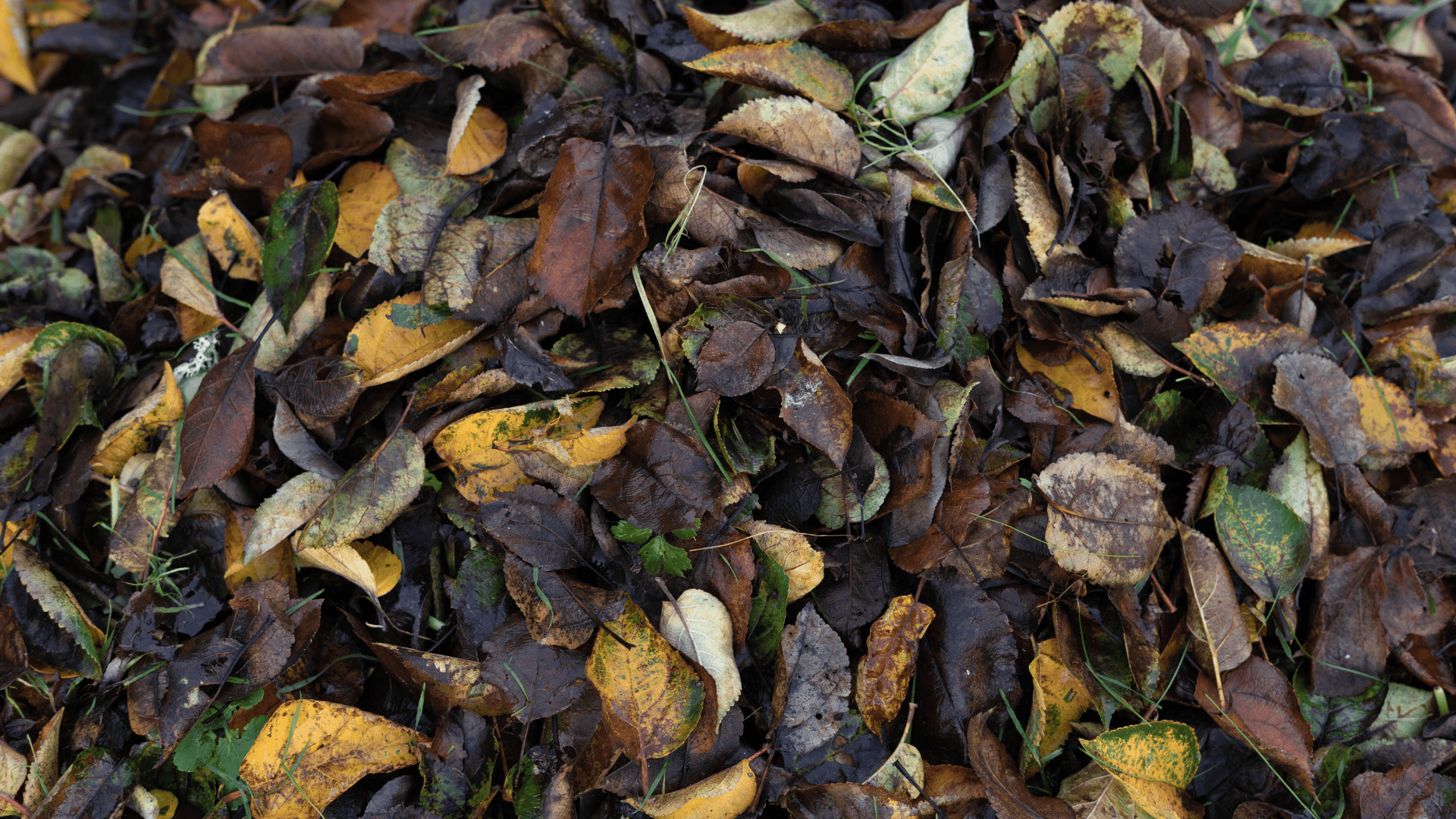
Last Saturday marked the first day of Autumn – the start of the autumnal equinox that marks shorter days, longer, chillier nights, last harvests from our gardens, plants entering dormancy, and pumpkin spiced everything in the grocery store. And of course, the season brings leaves that turn brilliant, vibrant colors, before falling to the ground. Many people enjoy leaf-watching this time of year, and for several, it is their favorite season.
But many homeowners look at their trees this time of year, eyeing the leaves they drop, and they see work. They see all the raking that needs to be done. They see tall piles of leaves that need to be moved. In DC, it also means needing to know DPW’s leaf collection schedule and getting your leaves to the curb in time to not miss pickup.
Last week, we examined the “trees and utilities” myth, and found that trees can be planted within safe distances and proximity to utilities – above ground power lines and underground pipes. With proper planning, tree species selection, and care, there is a spot for a tree on almost any property or space in DC, regardless of the utilities present.
In our last installment of this month’s mythbusting series, we bust the “leaf litter” myth. This is the myth that trees create a mess of leaves in our yards, and that leaves are something that need to be removed from homeowner properties. For some help in this week’s mythbusting, we turn to ISA certified arborist and Casey Trees Field Manager, Nick Smalley.

“I worked as a landscaper for about a decade learning a lot about the logistics of standard American landscape maintenance. The work followed the seasons – plowing snow in winter, planting in spring, mowing all summer, and cleaning up leaves from sunup to sundown all fall. Our focus was the best way to work through a site to get every leaf cleaned up as fast as possible to get to the next house. We would have a line of blowers going pushing leaves into piles 6 feet tall, to then rake them onto tarps, to pull them to a leaf vac attached to a dump truck, and fill that dump truck up as many times as we could for as long as we had enough light to work. It was a big operation.”
It’s a big operation, indeed. Many U.S. homeowners rake their leaves to the curb or have them removed by professionals every Autumn. The EPA estimates that leaves and other yard debris account for 35.4 million tons of waste per year, about 12% of all solid waste in the country. Much of it is composted, but some if it does find its way to landfills.
Nick continues to describe what he experienced after leaves were removed from homeowners’ yards: “Day after day we ran truckloads of leaves to the green waste recycling facility, where we would dump it out and race back to fill the truck again. What happened at the facility is the critical piece of information, and as I learned more and observed more, leaf removal made less and less sense. The leaves we landscapers dumped were piled up and turned into compost. The county then sold that compost to homeowners or landscapers. Some of it must have ended up on the properties where the leaves came from. The leaves weren’t given any special microbial inoculant, they were just given some time and turned into black gold – Compost.”
In fact, leaves aren’t litter at all – they are a highly undervalued resource! Leaves provide organic matter and nutrients back to the soil and are a natural mulch that helps suppress weeds and protect roots from temperature extremes.
“Soil health is a key factor in plant health, and decomposed organic matter is a key component of healthy soil when trying to grow plants in our area”, says Nick. “[Leaves] provide food for the soil microbiome. In the forest, no one cleans out the leaves. They serve to protect the soil.”
“Instead of spending time or money to remove leaves and put down mulch, consider going for a forest aesthetic and keeping the leaves there. In my landscaping days we noticed lawns where we mulched leaves were just as or healthier than those where we removed leaves. If you want to get the leaves off your lawn, consider raking them into your garden beds.”
“When I can get leaves, I use them as mulch around my peppers. If the trees are shading out your lawn, consider turning that area into a native plant bed. There are plenty of shade-tolerant native plant options that look great, provide for the local ecology, are more interesting than lawn, and are less work than mowing, and you can just let the leaves fall every year and do absolutely nothing to them.”
Casey Trees plants free trees for DC residents, many species of which are large shade trees that provide beautiful fall colors and leaves that act as fertilizer and mulch for lawns, gardens, and plant beds. Some species have smaller or more delicate leaves as well, which compost on the ground with no effort at all. These species include honeylocust, river birch, willow oak, or bald cypress. Homeowners can also chose to plant evergreen species, that do not lose their leaves, like Virginia Pine or Red Cedar.
No matter what species homeowners choose to plant, there is little reason to pull out the rake this fall. Leaves are not a nuisance to be removed from our yards, they are a vital resource to be utilized. To conclude on the “leaf litter” myth, Nick left us with this final thought:
“I’m not against cleaning up leaves from gutters, sidewalks, or driveways. But when it comes to the rest of your property, I want to remind people that they are called leaves for a reason – it’s best if you ‘leaf’ them where they are.”




